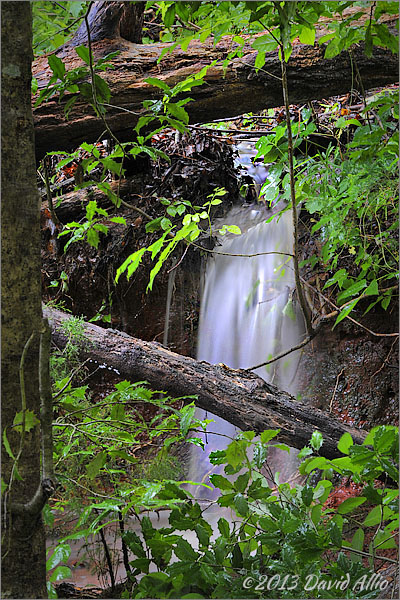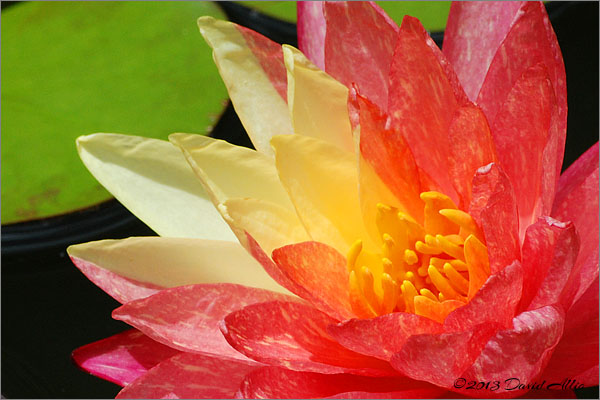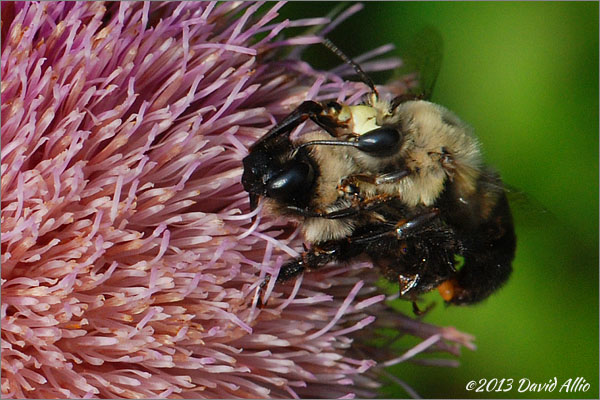
Wet Weather Waterfall | ©2013 David Allio
Following days of rain showers and thunderstorms in the Southeastern United States, runoff is creating wet weather waterfalls almost everywhere there is a drop in the terrain. This little waterfall appeared after an early morning thunderstorm. It may have only been a couple of feet tall, but the sound of falling water confirmed its existence in the dense forest.
Camera: Nikon D3 | Lens: Nikkor AF VR Zoom 70-200mm f/2.8G IF-ED | Focal Length: 82mm | Exposure: f/22 – 30 seconds – ISO 100

Water Lily | ©2013 David Allio
Now that summer is here, flowers are blooming all across North America. A few days ago, there were four water lilies blooming on the same day, a first for the backyard fish pond.
Now at first blush, it would seem that four colorful flowers would create a more interesting photograph than a single open blossom. However, the natural grouping of those four flowers never exactly fit my eye. Admittedly, the four flowers floating above the water’s surface made for some intriguing compositions. Nevertheless, probably because of my natural compulsion to show nature up close there was a much stronger attraction to this single colorful water lily.
Camera: Nikon D60 | Lens: Nikkor AF VR Zoom 55-200mm f/4-5.6G IF-ED | Focal Length: 200mm | Exposure: f/11 – 1/800 – ISO 400

Bombus impatiens | ©2013 David Allio
Is this really a digital photograph of two Bumble Bees?
I ask because it leads to a more rudimentary question of how do we know what we know?
Without getting into Kant, his Critique of Pure Reason, and a discussion of his four main perspectives of knowledge, have you ever thought about how you know what you know?
When this exposure was made, I was confident that the subject of this digital photograph is the Common Eastern Bumble Bee Bombus impatiens. After all, I have grown up seeing these yellow and black objects identified as "Bumble Bees." Based on experience, therefore I assumed these were Bumble Bees. However, while preparing the caption it was suggested that this may actually be the Narcissus Fly Merodon equestris, a look-alike for the Bumble Bee.
So which is it? If it is a look-alike, how do you really know?
Camera: Nikon D60 | Lens: Nikkor VR 105mm f/2.8G IF-ED | Focal Length: 105mm | Exposure: f/11 – 1/500 – ISO 400



You must be logged in to post a comment.